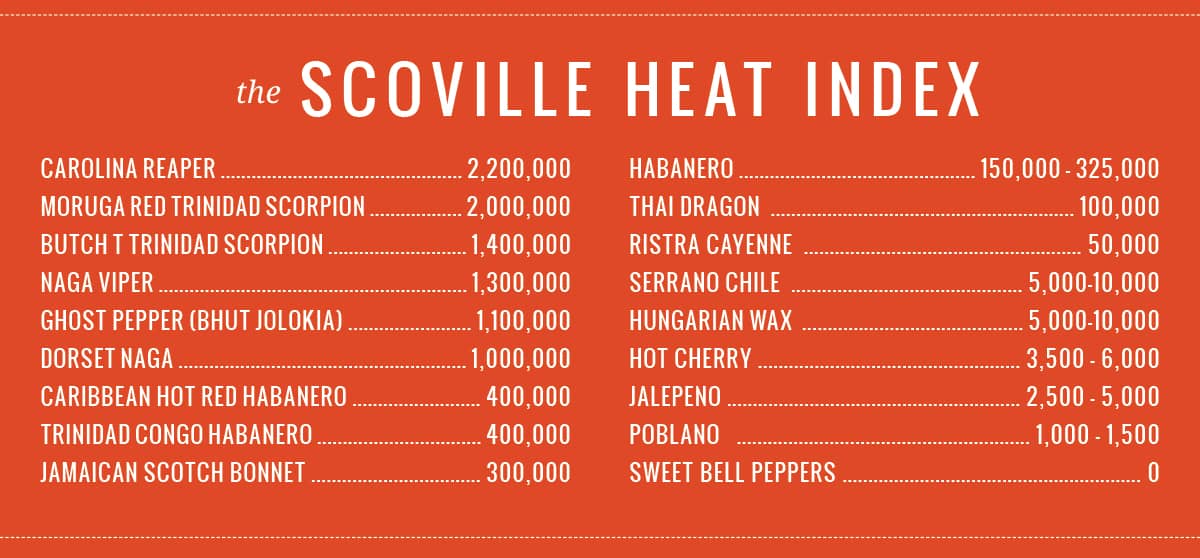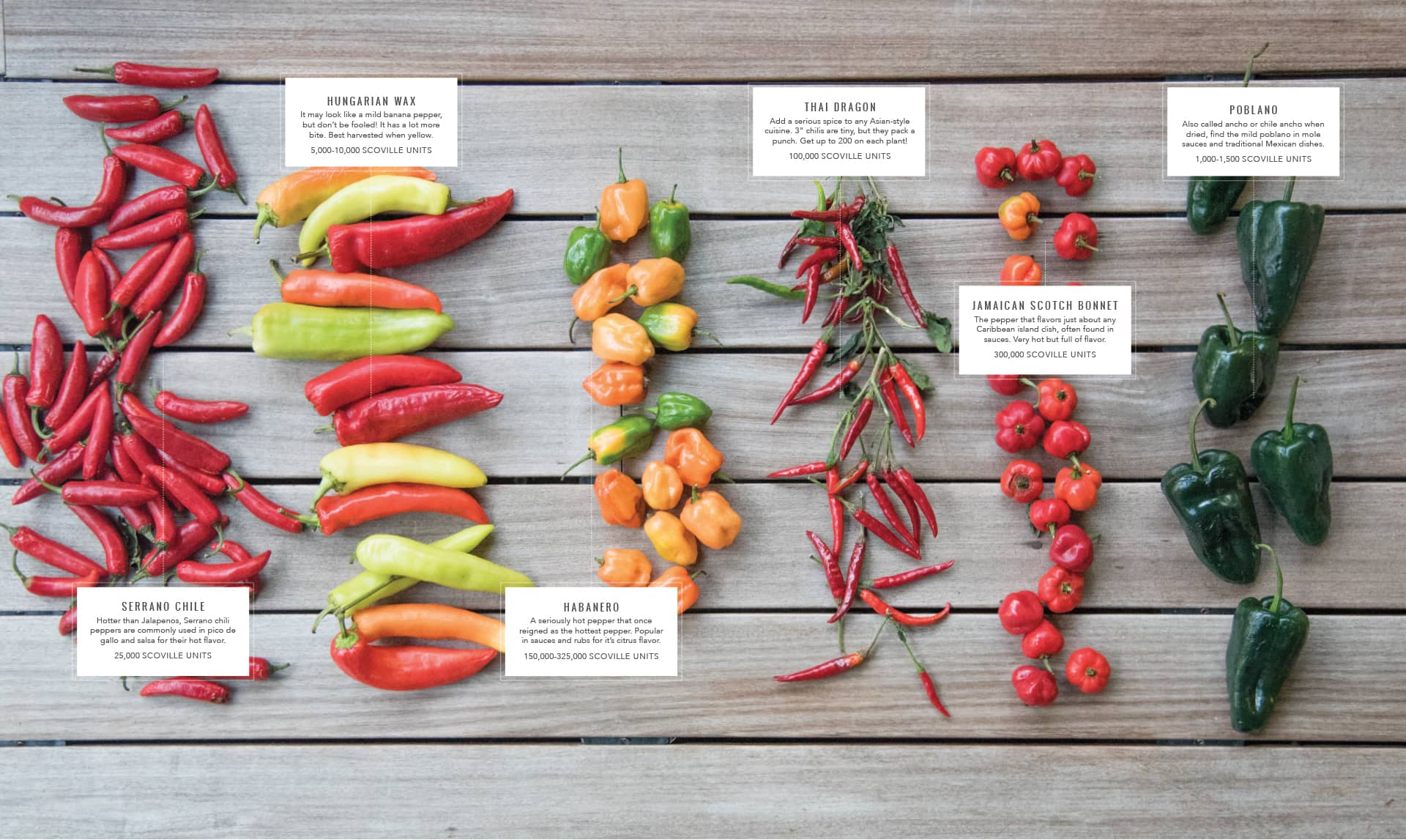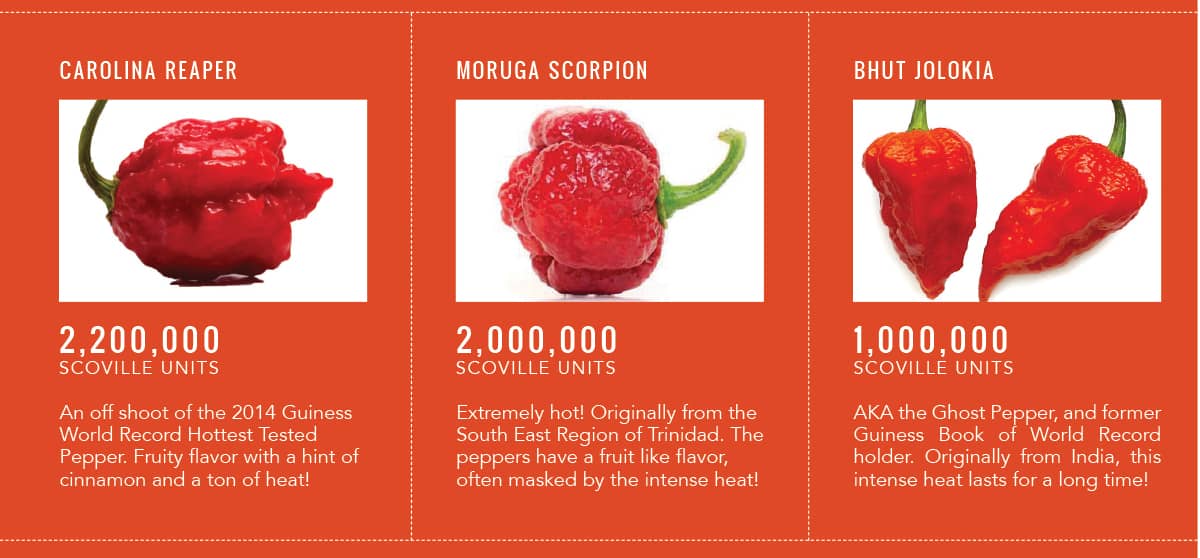HOT PEPPERS
Before we delve any deeper, we want to warn you that many of the hot peppers we sell are extremely hot! Many of them make a Jalapeño seem mild. Even touching the plant can result in irritation, let alone eating the fruit. Always wash your hands after handling the fruit and consider wearing gloves! We do not suggest eating these right off the plant, but rather using them in sauces and spicing in small doses. Don’t believe us? There’s a few videos on the internet that should serve as cautionary tale…
Love ‘em or hate ‘em, the intrigue of the hot pepper is as old as time. Cultivated around the world for centuries, we’ve grown a great selection this year to satisfy even the bravest taste buds. While most of you won’t be entering into a hot pepper eating contest anytime soon, hot peppers are fun to grow, and come in all shapes, sizes, flavors and most importantly: units of heat. When talking about hot peppers, knowing about the way the heat is measured is critical to deciding just what to grow in your garden. Invented by Wilbur Scoville, the Scoville Heat Index ranks peppers in order from the most mild to the epitome of fiery hot. The scale measures the capsaicin concentration in each pepper. This can vary on each plant depending on how the peppers are grown and how ripe they are. A hot pepper aficionado once told if you stop fertilizing when the fruit develops, and let the plant go dry between waterings, you can increase the heat of the peppers! At the bottom of the scale sits a bell pepper with 0 Scoville Units, and a Carolina Reaper sits atop with 2,200,000 Scoville Units. At the very top is US Grade Pepper Spray (2 to 5 Million Scoville Units). You’ll find dozens of hot peppers in between, many of which we carry in our Uncle Mike’s Vegetables line, grown by Uncle Mike Mahoney and our Woburn Growing Facility growing team.




